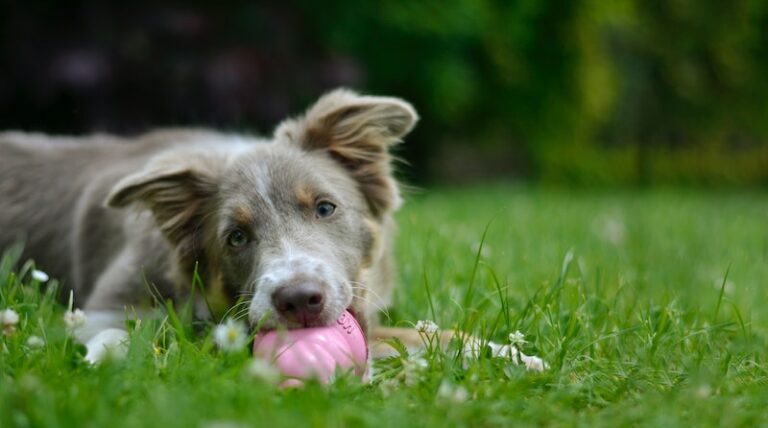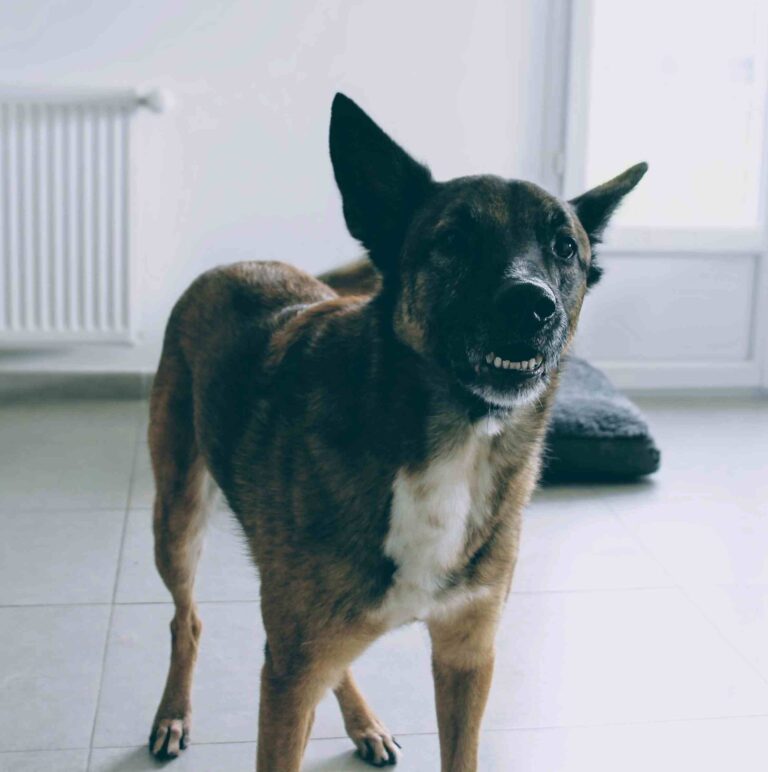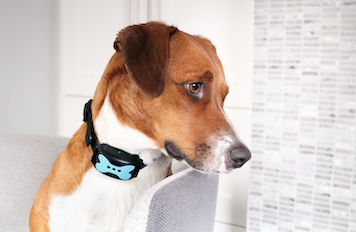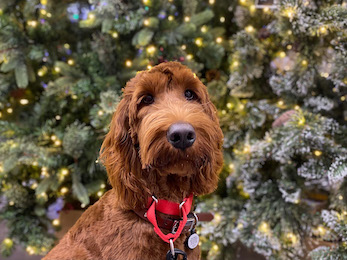So, you brought a puppy home and in addition to the puppy breath, the warm fuzzy feeling of having a new member of the family, and the excitement of it all, you now have a tiny piranha on your hands. Play biting, jumping, annoying the other pets in the home, you name it. This topic is dedicated to the “typical” or “normal” puppy behavior you may end up dealing with as an owner. Just because these things are normal does not mean that you must deal with it or wait for it to pass. There are many ways to address these concerns from the get-go. These activities can begin as soon as you bring your furry friend home at 8 weeks.
For now, we are going to focus on what we describe as “attention-maintained” problem behavior with puppies. Behavior analysts describe attention-maintained problem behavior as behavior that results in some sort of socially mediated consequence (Cooper et al., 2020). This might be petting, praising, or even scolding the puppy. Often any attention is better than no attention. Plus, we can provide ways to reduce these challenging behaviors in more ethical ways such as using positive reinforcement. Positive reinforcement is the process by which something is added to the environment after a behavior occurs which increases the probability of that behavior occurring again. In this instance, attention, such as praise or petting, can reinforce behavior. Furthermore, scolding or pushing a puppy off you can also serve as a positive reinforcer. Positive reinforcement can be strategically used to reduce problem behavior by reinforcing behavior we want to see. If the puppy is getting attention for appropriate behavior, they are less likely to engage in problem behavior to access attention.
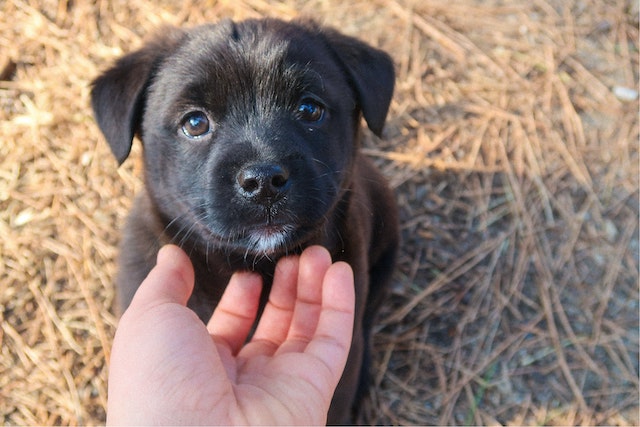
One procedure that we use positive reinforcement strategically is through differential reinforcement. Formally, differential reinforcement provides a reinforcer for a specified behavior to increase while simultaneously placing the unwanted behavior on extinction (Athens & Vollmer 2010). To place a behavior on extinction simply means to stop providing the reinforcer (Catania, 2015; Iwata et al., 1994). For example, if a puppy barks at you for a treat and you stop giving them a treat, the barking will eventually go away. However, using extinction on its own has some issues such as extinction bursts (a sudden increase in behavior) and extinction doesn’t teach your dog what you want them to do. Differential reinforcement is often preferred over extinction alone because it provides the added benefit of reinforcing an appropriate alternative (Vollmer & Iwata, 1992). That way, your puppy can still get what they want, your attention, but in much more productive ways.
Although more procedures exist than those described below, three common differential reinforcement procedures used in practice are differential reinforcement of alternative behavior (DRA; Vollmer & Iwata, 1992), differential reinforcement of incompatible behavior (DRI; Donnelly & Olczak, 1990), and differential reinforcement of other behavior (DRO; Reynolds et al., 1961; Vollmer et al., 1993). These procedures each have unique characteristics for behavior analysts and trainers to consider when choosing a treatment. For example, DRA involves reinforcing an alternative behavior. An alternative behavior does not need to be mutually exclusive to the problem behavior meaning both the inappropriate and new target behavior could occur at the same time. This procedure is compared to a DRI procedure in which an incompatible behavior is reinforced, meaning that the two behaviors cannot occur at the same time. Technically, DRI is a special form of DRA. To put this together, to reduce attention jumping in puppies using differential reinforcement, a DRA procedure may be to bring the owner a toy. The puppy may be physically capable to jump and hold a toy in its mouth at the same time, although the likelihood of that happening may be lower than if the alternative wasn’t taught at all. A separate replacement behavior might be to teach the puppy to sit with its bottom on the ground using a DRI procedure. The puppy is unable to both jump and sit at the same time to receive attention. A conceptually different differential reinforcement procedure is DRO, in which a reinforcer is delivered when the problem behavior has not occurred either for a specified duration or time or in a specific moment in time (Reynolds, 1961). This type of differential reinforcement works if it doesn’t matter what the puppy is doing as long as they aren’t engaging in the target behavior. An example of this is annoying another pet in the household. Below, you will see these concepts put in practice with your own puppy. You can also check out our video, “How to Address Puppy Play-Biting and Chewing,” for more information.
How do I get my puppy to stop jumping on me?
Jumping is often attention-maintained. You push your puppy off you or say “off!” and immediately you have created a new game for your furry friend. Although this is not the type of attention you envision giving your puppy, it is still attention. For jumping, we like to use positive reinforcement to reinforce behavior that is not jumping. We like to use differential reinforcement of an incompatible behavior here. With this procedure, we choose a behavior that physically cannot happen with jumping. Therefore, we use what is called an auto-sit or an automatic sit. The final response is that the puppy sits nicely and waits for attention to be delivered. Here is how we teach it:
- Talk to your puppy with food in hand, lean over if needed to ease them into a seated position and then immediately give them the food. Then stand back up and try again immediately.
- Talk to your puppy and wait for the puppy to sit. Continue feeding at a high rate as long as they maintain a seated position. If for any reason the puppy pops out of the sit, just stop feeding until they sit back down.
- Once your puppy is reliably sitting for the food, start to introduce petting. Keep feeding with your right hand and pet with your left hand. Begin fading the food by putting it behind your back and continuing to pet. Be sure not to stop petting when you stop feeding. Space the food out every few seconds until you reach 5 to 10 seconds between each time you feed.
- After your puppy has the hang of this, start teaching your puppy to tolerate a short delay for the food. This allows us to ultimately fade the food out completely and just use our attention as the reinforcer for the auto-sit. To do this, pet for a few seconds before you feed. Then continue spacing out the food every 5 to 10 seconds.
- At this point, you can start making it more challenging for your puppy by getting a little excited. Tap your legs and use a high-pitched voice. Still only pet when your puppy’s bottom is on the ground.
If, at any point, the puppy stands, stop petting. Once an auto-sit is taught, the puppy should be pet only for sitting or lying down. They should not be pet for simply standing around. This teaches the puppy that the only way to get attention is by auto-sitting. This does not have to be permanent! We just want the rules to be black and white while the puppy is learning. These steps should dramatically reduce jumping behavior and more importantly, teach your puppy how they can access attention appropriately.
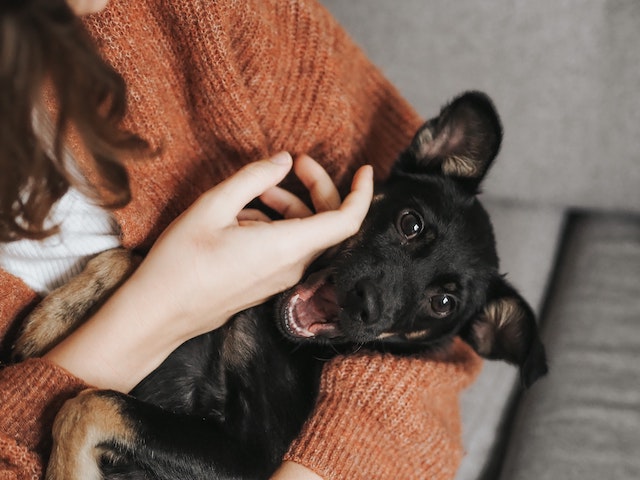
How do I get my puppy to stop play biting me?
Play biting is also often for attention. There may be some sensations in the mouth that feel good, especially as the puppy is teething, but you squealing or pulling your arm away makes for the perfect game. To start, we want to set up the environment so your puppy (and you!) can be successful.
Your puppy should always have access to 8-12 appropriate toys. Appropriate toys include Kongs®, Benebones®, and Nylabones®. Other toys that are not plush and not choking hazards work well. Your puppy should be praised and pet when a toy is in their mouth. Attention should be withheld if they drop the toy. This procedure is called differential reinforcement of an alternative behavior. This activity provides attention for appropriate behavior, chewing on toys instead of chewing on your hands. (Technically, this could be considered differential reinforcement of an incompatible behavior, but if you do this long enough, you may run into an instance where the puppy nibbles on both you and the toy at the same time!)
To take this a step further, we like practicing a tethered exercise we call tethered toy play. To do this, tether your puppy to a study piece of furniture. Provide 3 to 4 toy options. Sit on the ground near your puppy and every time they interact with the toy, provide a lot of praise and physical attention. If your puppy puts their teeth on your skin or clothes, grab the toys without saying a word and move out of sight for 30 seconds. This teaches the puppy that good things happen if they chew toys (attention is delivered) and that attention is removed if they put their teeth on skin or clothes.
How do I get my puppy to stop bothering my adult dog?
Another common problem behavior we see with puppies is their interest in their new older siblings, sometimes at the chagrin of the older dog or cat in your home. To address this concern, we like to use a procedure called differential reinforcement of other behavior. With this procedure, we are looking for ANY behavior that is not bothering the other animal in the house. For example, if the puppy sits near, lays down by, or simply ignores the other pet in the home, praise the puppy and offer them a treat.
For puppies whose interest is so intense that it is making your older pet miserable, try putting a leash on your puppy. Start across the room and begin talking to your puppy. Reinforce anything other than interest in your older pet. Be quick because the “other” behavior may last only a brief moment. It’s important to catch your puppy while they are engaging in the “other” and deliver food in that instance. You might feel like a Pez dispenser, but keep feeding fast enough such that your puppy stays disinterested in your older pet. Remember, your puppy doesn’t have to do anything specific, just not show interest in your older dog. As you’re able to space out the time between treats, allow your puppy more freedom and introduce praise and petting as a reinforcer. Watch for moments of “other” behavior and eventually target any other behavior only while your puppy is in close proximity to your older pet.
Using reinforcement procedures, specifically DRA, DRI, and DRO, are fun, ethical ways to reduce a wide range of typical problem behaviors in your puppy. You (or a trainer) are able to teach your puppy what you want and expect from them without using harsher methods. Teaching your puppy how to get what benefits both of you produces a rich teaching environment. What a positive way to start developing a life-long love of learning in your puppy—not to mention creating an unbreakable bond! The examples described above are just a few common behaviors we see in practice. Differential reinforcement can be used to target nearly any behavior you want and doesn’t stop at puppyhood. Put on your behavior analyst hat and see what behavior change you produce in your dog!
Citations
Athens, E. S., & Vollmer, T. R. (2010). An investigation of differential reinforcement of alternative behavior without extinction. Journal of Applied Behavior Analysis, 43(4), 569–589. https://doi.org/10.1901/jaba.2010.43-569
Catania, C. A., (2015). Learning (5th Ed.). Sloan Publishing.
Cooper, J. O., Heron, T. E., & Heward, W. L. (2020). Applied behavior analysis (3rd Ed.). Pearson Education.
Donnelly, D. R., & Olczak, P. V. (1990). The effect of differential reinforcement of incompatible behaviors (DRI) on pica for cigarettes in persons with intellectual disability. Behavior Modification, 14(1), 81-96. https://doi.org/10.1177%2F01454455900141006
Iwata, B.A., Pace, G.M., Cowdery, G.E. & Miltenberger, R. G. (1994). What makes extinction work: An analysis of procedural form and function. Journal of Applied Behavior Analysis, 27, 131-144. https://doi.org/10.1901/jaba.1994.27-131
Reynolds, G. S. (1961). Behavior contrast. Journal of the Experimental Analysis of Behavior, 4(1), 57– 71. https://doi.org/10.1901/jeab.1961.4-57
Vollmer, T. R., & Iwata, B. A. (1992). Differential reinforcement as treatment for behavior disorders: Procedural and functional variations. Research in Developmental Disabilities, 13(4), 393-417. https://doi.org/10.1016/0891-4222(92)90013-V
Vollmer, T. R., Iwata, B. A., Zarcone, J. R., Smith, R. G., & Mazaleski, J. L. (1993). The role of attention in the treatment of attention-maintained self-injurious behavior: Noncontingent reinforcement and differential reinforcement of other behavior. Journal of Applied Behavioral Analysis, 26(1), 9–21. https://doi.org/10.1901/jaba.1993.26-9
